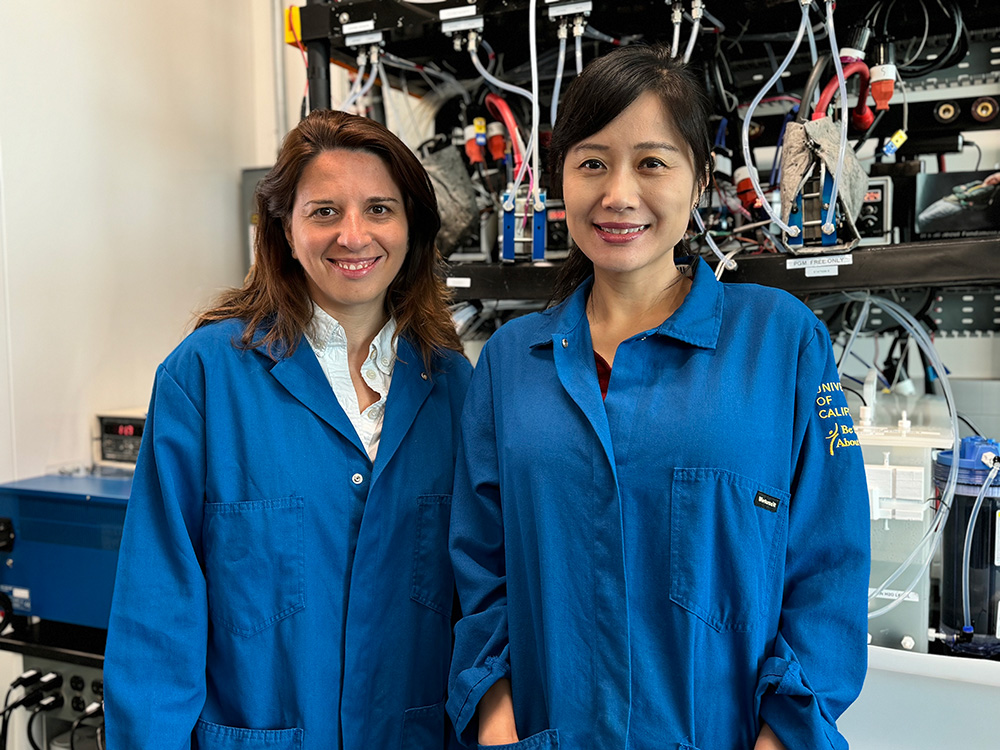Electrifying the Carbon-heavy Cement Industry

Oct. 17, 2024 - UCI Professors Mo Li and Iryna Zenyuk have found a way to decarbonize one of the world’s biggest polluters: the cement industry, which generates around 8% of all human CO2 emissions every year. “Cement is one of the most difficult industries to decarbonize,” said Zenyuk, professor of chemical and biomolecular engineering. “We need to get all types of solutions out there.”
Cement is the world’s most massively produced material with over four billion metric tons made a year, and it cranks out enormous emissions due to its production process. Current cement manufacturing requires temperatures above 1,400 degrees Celsius. Both the combustion of fossil fuels to generate this heat and the decomposition of limestone releases CO2, making cement production a major source of pollution.
But Li and Zenyuk have created a cleaner way. “We replace the high-temperature process that involves burning fossil fuels with an electrochemical process, made possible by innovations in electrolyzer designs and cement synthesis methods,” said Li, a professor of civil and environmental engineering. Their labs have collaborated to achieve electrochemical production of cement at lower temperatures without burning coal or natural gas.
Eliminating the use of fossil fuels enables production to be powered by electricity and renewable energy. In addition, the cement electrolyzer can capture CO2 and convert it into a value-added product like carbon monoxide, which can be used to make various chemicals.
Zenyuk who is also director of the National Fuel Cell Research Center said, “The electrolysis industry operates at similar scale to the cement industry. One of the most well-known electrolysis processes is the chlor-alkali process, where chlorine gas and caustic soda are being produced. The process is still early in development, but we have some exciting results.”
The UCI AM3 Lab (Advanced Multifunctional Materials and Manufacturing for Structures) has developed and produced various types of cements and cementitious materials that feature reduced energy use, lower CO2 emissions, greatly improved mechanical and lifecycle properties and novel functionalities. Examples include damage-tolerant cementitious materials that are much stronger and over a hundred times more ductile than conventionial concrete, cementitious materials that can self-sense and self-heal damage, cement that generates electricity, concrete that protects steel from corrosion and fire, cement clinker and concrete upcycled from industrial waste.
“The electrochemical process to produce cement clinker, the critical ingredient in all cementitious and concrete materials, will revolutionize how we build our civil and energy infrastructure,” said Li who directs the AM3 Lab.
Zenyuk and Li aim to scale up the electrochemical cement production process, further improve the manufacturing efficiency, and work toward bringing the technology to market. Their vision is to help transform the carbon-laden cement industry into a much greener and more sustainable one.
- Natalie Tso

